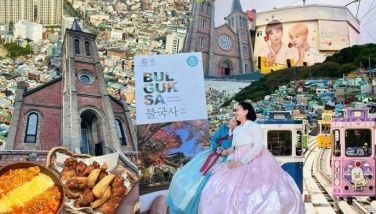The gift of economics
I was deeply saddened to hear, last week, of the passing of two people whom I fondly remembered from a highly formative stage of my young life. They were both redoubtable University of the Philippines professors — the economist Agustin Kintanar Jr., and the political scientist Loretta Makasiar Sicat.
Dr. Kintanar was married to our colleague at the English Department, the scholar and essayist Dr. Thelma B. Kintanar. Aside from that, he was also my professor in Macroeconomics when I attended the Program in Development Economics at the UP School of Economics in the early 1970s.
Dr. Sicat, on the other hand, was never my teacher, but she was the wife of my boss then, Dr. Gerardo P. Sicat, who was director-general of the National Economic and Development Authority (NEDA). An eminent social scientist in her own right, Sicat was kind, sharp-witted, and always smiling. She put those of us on her husband’s junior staff at ease, during those times when work or socials took us to the Sicat home in La Vista.
How did I find myself among all these economists, anyway? I may have told bits and pieces of this story before, but let me tell it again, if only to show how people can sometimes find themselves in places they never expected, and how a career path can be anything but straight.
I entered UP in 1970 as an Industrial Engineering major (I hadn’t the foggiest idea what an industrial engineer did, but it sounded good, and seemed to suit my Philippine Science High School background). After 21 units, I dropped out — heck, it seemed like everyone smarter than me was dropping out as well — to go deeper into activism and also to get a job (another long story, but I ended up as a reporter for the Philippines Herald and a correspondent for Taliba). When martial law came, and with Makati as my beat, I was absorbed among other jobless journalists by Mayor Nemesio Yabut into what he called his “Performance Team”; we checked the attendance of streetsweepers in our assigned barangays early in the morning and played Scrabble for the rest of the day.
All that changed when, in January 1973, I was arrested at home by the military for “subversion”; I marked my 19th birthday and spent the next seven months in Fort Bonifacio with the likes of Jejomar Binay and Orly Mercado, strictly small fry among people who were, even then, big fish. Released one August morning, I went back straight to UP in the afternoon, only to find that a deathly pall had fallen over the campus. It wasn’t the rowdy, carefree UP I had left, and at that moment I knew I wasn’t going back to school for a while.
In the meantime, I learned printmaking, and practiced it in the old Printmakers Association shop on Jorge Bocobo Street in Ermita. That’s where I met a pretty artist named June, whom I’d had a schoolboy crush on back in Diliman. After a flurry of love letters (the only other skill I suppose I had), she became my girlfriend — just my second one at that point, and after having lost the first, I resolved never to let her go.
Sometime in early November, I announced to my mother at breakfast that I wanted to get married (June, or Beng, didn’t even know that yet). My mother said what all mothers would: “Are you crazy? You’re only 19, and you don’t even have a regular job. Get a job first!” That same morning I went to my Ermita haunt and walked around the block a bit, mulling over what my mother had told me; that’s when I ran into a friend who’d also been a reporter before martial law, Jun Medina. He was now working as the PR officer of NEDA, which stood just around the corner. “We’re looking for a feature writer,” Jun said. A bulb lit up in my head, and minutes later we were talking to his boss, Gerry Sicat, a soft-spoken man in his 40s, obviously very bright in the way soft-spoken people often are. Jun must have said something right because soon I heard Dr. Sicat saying, “Let’s start at seven.” It took me a while to understand that he meant “P700 a month,” a small fortune to me at a time when I was making about P30 per print, if ever (the dealer who bought my prints wholesale used them to fill up the frames she was selling in the US bases).
That night I went home to my mother and told her, “I got a job. I’m getting married.” The next thing was to tell — or, well, to formally ask — Beng about the plan. A few days later we met in Cubao at the old Skorpios restaurant and, on a napkin, I proved to her that we would survive on my new salary. Though rudimentary — we didn’t have too many zeroes to deal with — the math worked, and she said yes. (Years later, she would claim, “I didn’t know what I was doing.”) We agreed to get married in January, on my 20th birthday, and we did — with my mother having to sign her approval, as I was legally underage (my mother-in-law found out how old I was only on the ride to the judge; I was a big boy).
And that’s how I got into NEDA, and into a decade of economics and writing about it. Dr. Sicat soon discovered that I could also write speeches and had me draft a few. When he realized that he had hired a technical freshman, he made the kind of gamble I was to be forever grateful for. “There’s a program in UP in development economics, but it’s at the graduate level. I’m sending you there as a special student to learn some economics.” I went, and I did learn; it was one of the most exhilarating years of my life, in the course of which our baby Demi was born. Under the likes of Dr. Kintanar and other UPSE stalwarts such as Drs. Gonzalo Jurado, Rosalinda Tidalgo, and Dante Canlas, I began to grasp the outlines of “the dismal science.”
Dr. Sicat’s mentorship didn’t end there. A few years later, when the martial-law military brought up the matter of my spotty security background, he sent me away again to cool off for a year with the local office of the United Nations Development Program, where I put both my writing skills and economics to work drafting project documents in such esoteric fields as civil aviation. At the end of the year, however, I asked to be reeled back in to NEDA, to my old writing duties; as fun as the UNDP had been, an old urge to just write was welling up within me.
In 1980, Dr. Sicat called me into his office again. “I’m sending you to the United States,” he said. “I think you should see what it’s like out there.” It was my first foreign trip, and for three months I observed and apprenticed with media organizations in the Washington, DC and Michigan. It was to prove ironic, because — in the sylvan surroundings of an American college campus — I felt a yearning to go back to school.
Not too long afterwards, I was back in UP, having re-enrolled as a freshman at 27. Soon, Dr. Sicat was out of NEDA, a casualty of Palace politics, and I myself resigned shortly, and joined the yellow marchers on the street.
Today, when I work on the biographies of business leaders or edit technical papers for companies and international agencies, I look back on these odd turns in my life with humor and gratitude, thanking Providence for another skill and another, more grounded, view of the world.
* * *
E-mail me at penmanila@yahoo.com and visit my blog at www.penmanila.net.




















